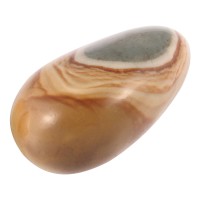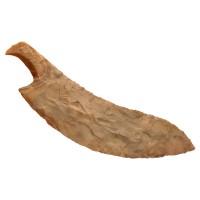Flint - knowledge base, jewelry
Properties of flint, physiological effects, zodiac signs and flint jewelry.










Flint is a hard rock, a form of microcrystalline mineral quartz.
It occurs mainly in sedimentary rocks such as limestone. The flint is usually glassy or waxy in dark gray, brown, black or green. Flint is one of the defining materials of the Stone Age. When struck on steel, flint gives enough spark to ignite the fire with a flammable material. The artificial materials used to make sparks in lighters were also called flint (or chert).
Chemical and physical properties of flint:
Formula:
SiO2 silicon dioxide
Crystal system:
hexagonal
Category
quartz- chalcedony
Color:
grey, black, brown, red, white
Streak:
white
Transparency:
translucent, opaque
Cleavage:
none
Fracture:
splintery, conchoidal
Mohs scale hardeness:
6,5 – 7,0
Specific gravity:
2,5 – 2,9 g/cm³
Major metaphysical healing properties attributed to flint:
Stimulates detoxification, relieves pain, regenerates the skin, enhances mucosal and the lungs function, stimulates the genitals, rebuilds tissues, improves cell memory, for warts, to treat wrinkles, relieves back pain.
The history of flint
Flint was used in the manufacture of various stone tools, cutting and scraping tools, and as a means of igniting fire. In the Stone Age flint was important for survival. People traded in it and traveled far to get it. One important source of flint was the Flint Ridge in Ohio, where indigenous people extracted their flint from hundreds of quarries.
Use of flint
Flint is very durable material. It can be polished well and often comes in a wide variety of colors. The more beautiful stones are polished into a cabochon or pearl shape for use as a gemstone. Flint and jasper are similare substances, and both are types of gemstones known as "chalcedony."
Occurrence of flint
United States mountains, Mexico





